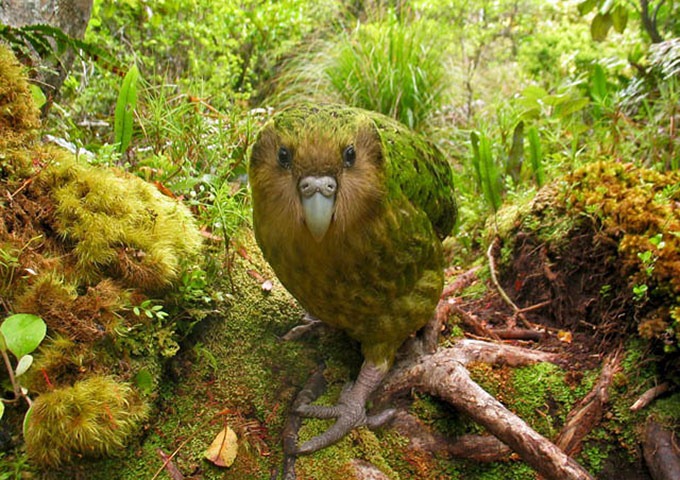The International Photo Competition of World’s Rarest Bird
The International Photo Competition of World’s Rarest Birds Projects was announced last month. The competition, launched in 2010, aimed to secure images of the 566 most threatened birds on Earth for a new book highlighting their plight. Thousands of images were entered into the competition out of which hundreds will be featured in The World’s Rarest Birds to be published in 2012. Profits from sales will go to BirdLife International’s Preventing Extinctions Programme to help support conservation projects worldwide.
winning photographs below :
 |
| Photo Competition of World’s Rarest Birds Projects |
Winner of the critically endangered or extinct in the wild category: Kakapo by Shane McInnes.
The kakapo is a large, flightless parrot from New Zealand and one of the rarest birds of all, with only 124 individuals alive today. The main reason for its decline is predation by introduced mammals, particularly feral cats
 |
| Photo Competition of World’s Rarest Birds Projects |
Second prize, critically endangered or extinct in the wild category: Brazilian Merganser by Savio Freire Bruno.
A fish-eating duck restricted to a few fast-flowing rivers in central Brazil and north-eastern Argentina. The population is less than 250 individuals and decreasing, the main threat to its continued survival being changes in water flow and pollution
 |
| Photo Competition of World’s Rarest Birds Projects |
Third prize - critically endangered or extinct in the wild category: Christmas Island frigatebird by David Boyle
A large seabird which breeds only on Christmas Island in the Indian Ocean. The breeding population is about 1,220 pairs, and decreasing, most in a single colony. The main threats to its survival are loss of its breeding trees and pollution caused by phosphate mining, cyclones, and possibly the introduced yellow crazy ant
 |
| Photo Competition of World’s Rarest Birds Projects |
Fourth prize - critically endangered or extinct in the wild category - forest owlet by Jayesh K Joshi
This species has a tiny, severely fragmented population, known from less than 10 recent locations in central India. It is likely to be declining as a result of loss of its deciduous forest habitat
 |
| Photo Competition of World’s Rarest Birds Projects |
First prize - endangered or data deficient category (not enough information known to pinpoint the threat, although it is clear that the species are under threat of extinction): Asian crested ibis by Quan Min Li
A medium-sized water bird that once bred in Russia, Japan and China but suffered a major population crash. It is now restricted to Shaanxi province in central mainland China, where just 250 individuals survive, though the population is slowly increasing as a result of conservation action. The main reason for its decline is probably linked to the loss of suitable feeding grounds due to the change from rice-growing to dry wheat production
 |
| Photo Competition of World’s Rarest Birds Projects |
Second prize - endangered or data deficient category : Red-crowned crane by Huajin Sun
A very large crane that breeds in eastern Russia and China, and in Japan. The population now numbers only 1,700 mature individuals and is continuing to decrease due to the loss and degradation of wetlands through conversion to agriculture and industrial development
 |
| Photo Competition of World’s Rarest Birds Projects |
Fourth prize - endangered or data deficient category: Great Indian bustard by Csaba Barkóczi
The small, declining population of this species in central and north-eastern India is endangered because of hunting and agricultural development
 |
| Photo Competition of World’s Rarest Birds Projects |
First prize - critically endangered migrant birds: Orange-bellied parrots by David Boyle
A small parrot that breeds only in a small area in south-western Tasmania and migrates to coastal areas in south-eastern Australia in the winter. The wild population is probably less than 150 individuals and decreasing probably due to the loss of its wintering favoured habitat as a result of agriculture and urban and industrial development
[via Guardi ]
No comments:
Post a Comment